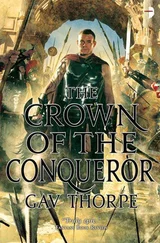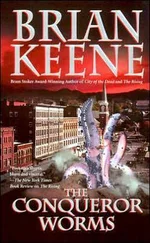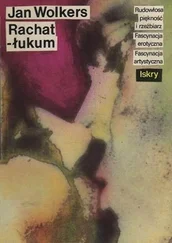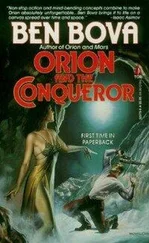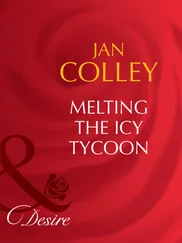Sometimes he and Kristin would sit together in the old apple tree in the garden, a hardy Sävstaholm which had been growing there when Jonas’s parents bought the ground. It was like entering another dimension, another element, like water — he could see why the Chinese called trees ‘the fifth element’. And as they sat there listening to the sighing of the leaves, he would tell Kristin stories about how important trees were to people; he told her about the bodhi tree under which Buddha was sitting when he finally achieved enlightenment, or about the apple tree which prompted Isaac Newton’s contemplations on gravity. Jonas suddenly discovered — as if their botanical surroundings were also having an effect on him — that he knew a whole lot of stuff about trees, that he must have been picking up bits and pieces all through his life: that sitting here in a fork in the tree trunk seemed to call them to mind, and he found that he was able to weave these snippets of knowledge together again. He told Kristin about trees in North America which were thousands of years old, or about the cedar trees of Lebanon King Solomon had ordered for the temple in Jerusalem; about the baobab trees of Africa which were used as houses, and the two trees whose branches entwined over the grave of Tristan and Isolde. ‘Old trees are like dragons,’ he said, after describing the Nine Dragon Tree, an ancient cypress he and Margrete had stumbled upon in Beijing, or the dragon’s blood trees they had seen on Tenerife. Kristin, for her part, might make some comment about the sounds trees made, they breathed, she said, or about their bark, that it smelled better than perfume, as well as asking questions which he could not answer: ‘What does “achieve enlightenment” mean?’ she would say. Or: ‘Are there trees inside our heads?’
Jonas turned away from the drawing child and crossed to the high bench where the piece of wood sat ready and waiting in the vice. He would spend a couple of years working on a dragon’s head; with this one he was past the first, roughing-out, stage and had shaped and smoothed the surface with one of the bigger U-gouges. The face was also completed — eyes, nose, jaws — and he had long since begun on the actual decoration, first of all by ‘grounding out’, which is to say: cutting down to the deepest points in the relief — a painstaking process calling for lots of different gouges. He was now faced, in other words, with the demanding task of carving the fine detail; he carefully examined the tracing paper on which, once and for all, he had copied the Academic’s exquisite design on a scale of 1:1, the patterns formed by the stylised swans. He had to take care of the contours first, get the main lines right. That done, he could move on to the outermost edges of the bands, then the ornamented surfaces. He studied it at length, knew that an understanding of the motif as a whole, its lines, was half the battle. He could hardly wait, took down a big No. 2 gouge, whetted and polished it, needed to get it as sharp as possible, felt a thrill of apprehension run through him as he put the steel to the wood and cut away the first sliver, like an archaeologist setting his spade in the ground, about to unearth sensational discoveries.
How does one become a murderer? Or, to put it another way: in that ‘sacred’ room, in the selfsame cupboard in which he kept his precious woodcarving tools, could Jonas Wergeland also have hidden an old Luger? I refuse to believe it. That is why I am sitting here, Professor: I refuse to believe it.
Jonas makes a rhomboid cut, a tricky device, then an oblique hatch; he has to strain his eyes to the utmost, it is the eyes that tire first; he is working on a small patch, but using a large gouge — ‘Always try to work with as big a gouge as possible, to get the cleanest cut,’ old Sundbye had told him — Jonas loves the resistance offered by the wood, loves the smell, loves the thought of how good it will be, better than the last head anyway, always a little better, bands running under and over one another, four birds and yet something else entirely. He knows, he has always known, that woodcarving is not merely a hobby: that it has something to do with the world, with all of his problems. That this might even be his purpose in life: in the end, not only to master the craft itself, but also the thought behind this intricate tracery. There were times, even at the height of his television series’ success, when Jonas Wergeland had the feeling that nothing mattered but this: to carve the perfect dragon’s head. ‘I don’t make programmes,’ he said, ‘I make dragons.’
After an intense bout of carving, he looked up, became aware that Kristin was still sitting at the desk next to the window, drawing with coloured pencils now. It was very quiet — the quiet of a forest. The light slanting through the window formed a halo around her. He was filled with love at the sight of this child with her head bowed over the paper, her face rapt with concentration, her whole mind focused on just one thing: the drawing of a tree. Jonas stood there with his gouge in his hand, looking at her, a child drawing, a perfectly normal sight, but at the same time, what a sight, an everyday situation which shone with a timeless beauty, a kind of blinding revelation of the miracle of existence, akin to the ineffable light of mysticism. Why do we give up drawing? Why do we do all those drawings as children, as if it were the most natural thing in the world, covering sheet after sheet of paper, revelling in it, and then all of a sudden one day it stops?
He crosses to the desk, glances down at her paper, notes how she too has created something that coils and twines, a large tree, a tree unlike any he has ever seen before. She has done something odd with the branches, sort of plaited them together, and the tree is half fire, glittering, and half green — it looked, more than anything else, like a piece of jewellery. ‘It’s a tree with leaves that are wet with dew, in the sunshine,’ she said, without turning, knew that he was standing behind her.
He was filled with a sudden sense of dread. A fear that something might happen to her. Or to him. He placed a hand on her head. ‘How lovely,’ he said. ‘You’ve drawn…lots of things at once.’
He knew she was practising for something — this thing with the trees, all these sheets of papered covered in networks of branches — but he didn’t know what.
‘What was he called, that painter who cut off his ear?’ Kristin asked as she was getting out a fresh sheet.
‘Van Gogh.’
‘Why did he cut off his ear?’
‘Nobody knows,’ Jonas said. ‘Some people say he was in love, but I think maybe he was afraid of the dark.’
‘Or maybe he thought he was a tree,’ Kristin said.
They had devoted a whole day to the Dutch painter the Christmas when Aunt Laura gave them the book on him. He had shown Kristin Van Gogh’s chestnut trees and bluish-green conifers, the twisted olive trees and, not least, the cypress trees like green flames against the sky. They had studied the pink and white gardens of Arles with their pear and peach trees and, best of all, the little almond tree in bloom — and afterwards Jonas had taught Kristin the verse by Nikos Kazantzakis which Margrete had once taught him: ‘I said to the almond tree,/“Sister, speak to me of God.”/And the almond tree blossomed.’
It is Sunday, holy day. Jonas returns to his bench, sets to work on the dragon’s head again, on the piece of wood into which he means to carve life, cover it in an intricate play of lines. He glances out of the window, towards Ravnkollen’s granite wall, spies a crack in the middle of the cliff face, a black hole that can still make him shiver in horror. He turns to where Kristin sits with her head bowed, still drawing — drawing with wax crayons now, possibly inspired by Van Gogh’s thick daubs of paint. He knows that some day this child will be the saving of him. That this is why he had her, to be the saving of him.
Читать дальше


